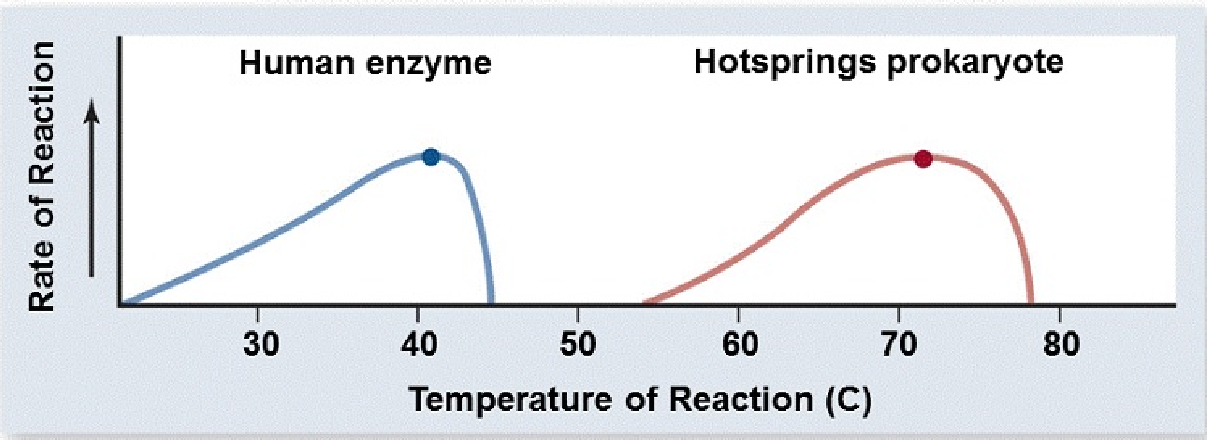Based on the graph, what are the optimal temperatures for the human enzyme and hotsprings prokaryote enzyme?

A. The optimal temperature for the human enzyme is 30 degrees C. The optimal temperature for the hotsprings prokaryote enzyme is 60 degrees C.
B. The optimal temperature for the human enzyme is 40 degrees C. The optimal temperature for the hotsprings prokaryote enzyme is 72 degrees C.
C. The optimal temperature for the human enzyme is 46 degrees C. The optimal temperature for the hotsprings prokaryote enzyme is 79 degrees C.
D. The optimal temperature for the human enzyme is 35 degrees C. The optimal temperature for the hotsprings prokaryote enzyme is 65 degrees C.
B. The optimal temperature for the human enzyme is 40 degrees C. The optimal temperature for the hotsprings prokaryote enzyme is 72 degrees C.
Fat molecules have many bonds, and breaking those bonds provides energy, as discussed in the text. Therefore, these macromolecules are a convenient way of storing energy, and stored energy is considered potential energy. Human cells cannot perform photosynthesis. Breaking down macromolecules is an exergonic process.
You might also like to view...
The gene (IGF1) that encodes a growth hormone has one allele (IGF1-A) that is found in small dogs but not in dogs that are very large. What does this suggest about body size of small dogs?
A. Body size depends on how much growth hormone is produced during early fetal development. B. Body size depends on whether or not the IGF1-A allele is present, if it is the dog grows very large, if it is not present the dog retains a small size. C. It suggests that small dogs are small because the IGF1-A allele is expressed, perhaps inhibiting the growth of the dog and the release of growth hormone. D. It suggests that small dogs have more growth hormone released during fetal development but none released after the birthing process. E. Body size depends on nutrition, not on genetics.
Identical copies of each chromosome are called ________ and are joined at the ________.
A. homologues; centromere B. sister chromatids; centromere C. sister chromatids; kinetochore D. homologues; kinetochore
In a fungus, a complex multicellular reproductive structure is called a(n):
a. hypha. b. gametangium. c. fruiting body. d. oogonium. e. antheridium.
A single pass trans-membrane protein that is an alpha helix can make a channel.
a. true b. false